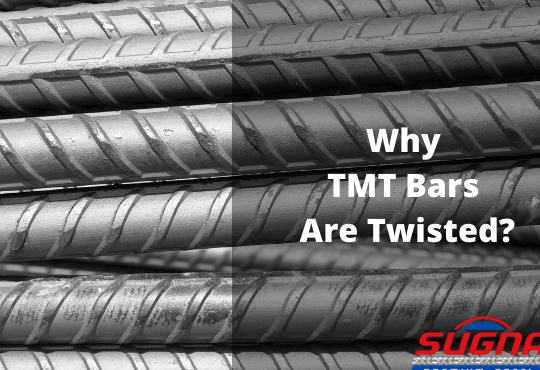TMT Steel Bars are undoubtedly the most commonly used steel bars in building construction in today’s time. But do you know that TMT bars are actually not twisted bars, unlike the traditional HYSD (High Yield Strength Deformed) Bars which had to twist as a trademark structural feature?
So does this lack of twist impact the strength of the TMT steel bars and their hold on the concrete? Are twisted steel bars better than TMT steel? Well, we answer all these questions, and more, here in this article.
Twisting – The Obsolete Technology
Twisting of steel bars is an obsolete manufacturing procedure that was used in the HYSD bars and lead to the creation of twists or ribs along the surface of the bars. However, this leads to deformities on the surface of the bars, which could prove to be counterproductive.
Therefore, twists are no mo desirable, and the modern-day TMT bars manufactured without the twisting procedure and found to be much more efficient. How? We tell you in the next section!
Why TMT Bars are Better?
- TMT bars, at a very fundamental level, have better tensile strength as compared to all other kinds of steel bars, including HYSD bars. This is because of the difference in the manufacturing process. The procedures applied on the TMT bars during their manufacturing enhance their strength; make them touch, while at the same time preserving their flexibility and ductility.
- One of the best things about the TMT Bars is that there are no surface distortions or flaws, something which is present in the HYSD Bars in plenty. This is a direct outcome of the absence of any kind of twisting or torsion stress during the manufacturing process.
- The other surface of the TMT Bars is tough and crystalline in nature, cuddling a ductile core. HYSD Bars, on the other hand, are characterized by a brittle outer layer. No doubt, the TMT steel bars exhibit more strength and durability due to this fundamental difference in the nature of the outer layer.
- Due to better flexibility and elongation, TMT bars are also found to be more efficient and cost-effective. It is a well-researched fact that the use of HYSD bars in construction leads to 8%-11% more steel consumption as against the use of TMT Bars.
- Further, as HYSD Bars lack flexibility and elongation, there are limitations to their use. HYSD bars cannot be used in all kinds of modern-day structures. TMT steel bars, on the other hand, can be used in different types of constructions, thanks to their flexibility and elongation capacity.
- TMT Bars are again better than the rest even when it comes to anti-corrosion properties. It has been found that TMT Bars are more corrosion resistant and stay rustproof for a longer period of time as compared to the HYSD bars. TMT Bras derive this absolutely desirable property from the rapid quenching and tempering process used in their manufacturing.
- Due to the coming together of enhanced strength and improved flexibility, TMT bars give earthquake-resistant properties to the building that they are used in. This is something that the HYSD bars painfully lacked!
Final Words:
If you are looking to consult the best tmt steel bar supplier in hyderabad then feel free to connect with SugnaTMT.
Above were some of the primary ways which make TMT bars, with or despite their lack of twists, much better and more useful than the HYSD bars. Amongst other things, TMT bars are also environment friendly as they can be reprocessed and reused without any loss in the quality of the steel. Further, TMT steel bars are lightweight, which makes their transportation, assembly, and installation much easier, faster, and economical.
We hope this dispels all your doubts about the presence of twisting patterns on the HYSD bars and the lack of them on the TMT bars. The bottom line is that TMT bars use the latest technology, display the most desirable features, and hence are the best suited for all \kinds of modern-day building constructions.


